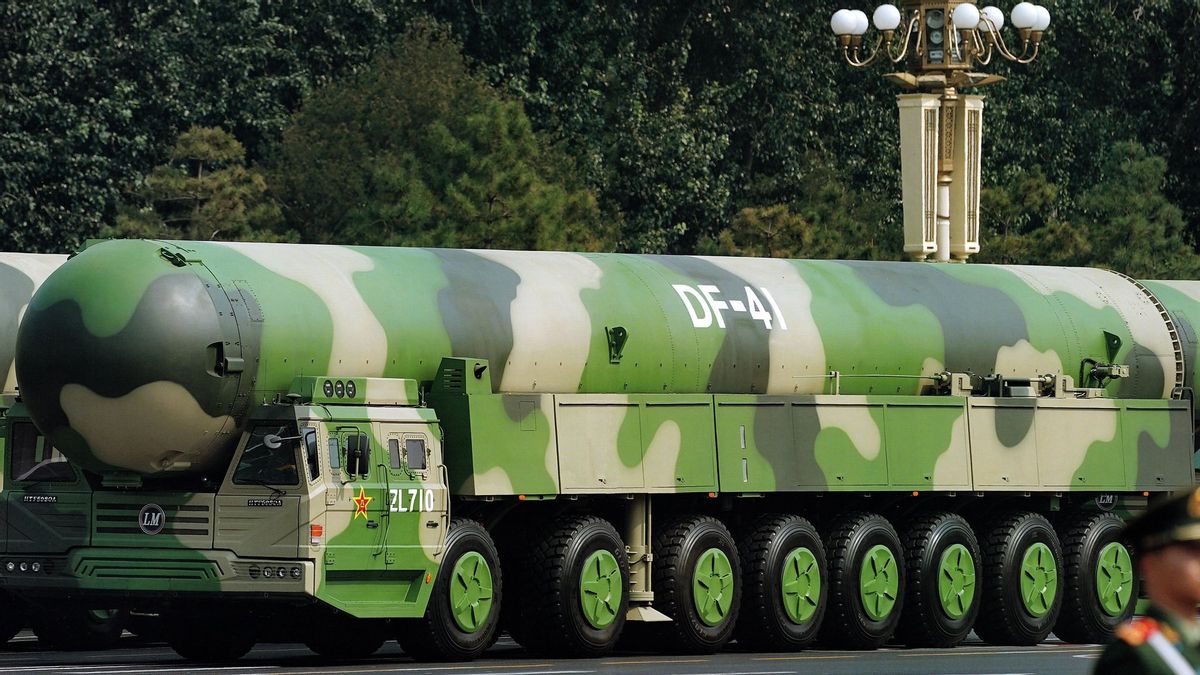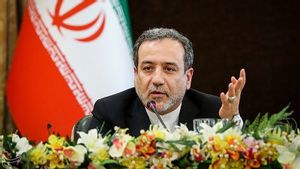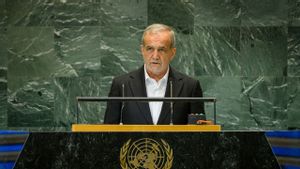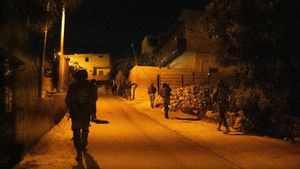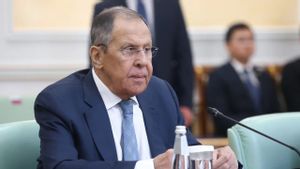JAKARTA - China's Ministry of Defense on Wednesday said the Chinese People's Liberation Army Rocket Force (PLA) had successfully test-launched an intercontinental ballistic missile (ICBM) carrying a mock warhead in the Pacific Ocean.
"The missile fell into the estimated marine area," the ministry said, adding it was a routine schedule in its annual training plan and related countries had been notified beforehand, reported by Xinhua September 25.
The ministry noted that the launch tested the performance of weapons and effectiveness of military training and achieved the desired goals.
The launch of the ICBM by the PLA Rocket Force was carried out at around 8:44 a.m. Beijing time, as quoted by Reuters.
A Japanese Coast Guard official said he had received a navigation warning from China on Monday regarding "space debris" in three zones in the South China Sea and Pacific north of the Philippine Luzon Island, as well as in the South Pacific, on Wednesday.
The official declined to confirm whether it was related to the reported missile launch.
The Bamboo Curtain country rarely fire long-range missiles into the sea because it prefers to test them without notification in remote provinces such as Inner Mongolia, analysts say.
The PLA Rocket force, which operates the country's conventional and nuclear missiles, has been tasked with modernizing China's nuclear forces in the face of developments such as increased US missile defenses, better surveillance capabilities and strengthened alliances.
Singapore-based security analyst Alexander Neill said, although the details of the missile used were unclear, the test matched China's pattern of "involvement and warning" at the same time, recording increased military diplomacy between Beijing and Washington in recent months.
Several online tracers recorded missile launches from Hainan and not from inland silos, meaning they are most likely long-range, moving missile tests whose numbers continue to grow.
Some analysts say China's nuclear development speed exceeds credible minimum deterrence, the smallest strategic weaponry needed to prevent attacks.
Beijing for years adhered to a nuclear weapons policy "not to be used for the first time", but analysts noted the PLA was pursuing a lag from large nuclear powers by deploying three new gun attacks that could be fired from land, sea and air.
The Chinese military has stressed that the Central Military Commission, led by President Xi Jinping, is the only nuclear command authority.
SEE ALSO:
China canceled nuclear negotiations with Washington in July following US arms sales to Taiwan.
China has more than 500 operational nuclear warheads in its arsenal, some 350 of which are ICBM, and will probably have more than 1,000 warheads by 2030, according to Pentagon estimates last year. China's military is building hundreds of silos for ground-based ICBM, the Pentagon said in the report.
That compares with 1,770 and 1,710 operational warheads deployed by the US and Russia. The Pentagon said, by 2030, many Beijing weapons would likely be stored at a higher level of readiness.
The English, Chinese, Japanese, Arabic, and French versions are automatically generated by the AI. So there may still be inaccuracies in translating, please always see Indonesian as our main language. (system supported by DigitalSiber.id)
